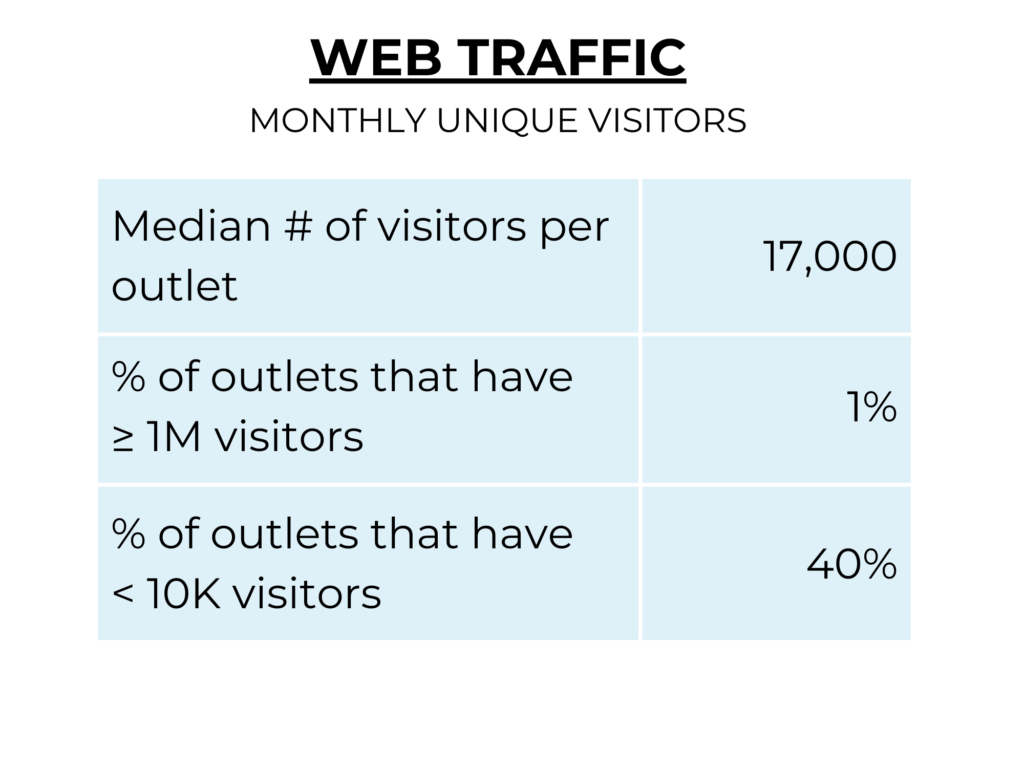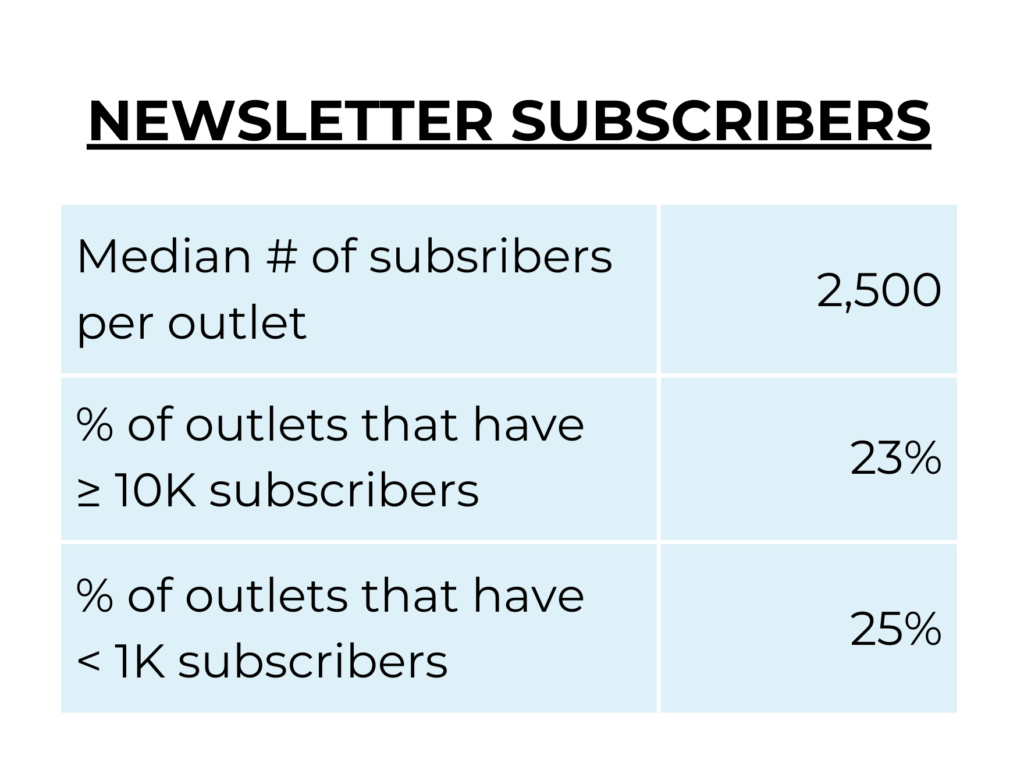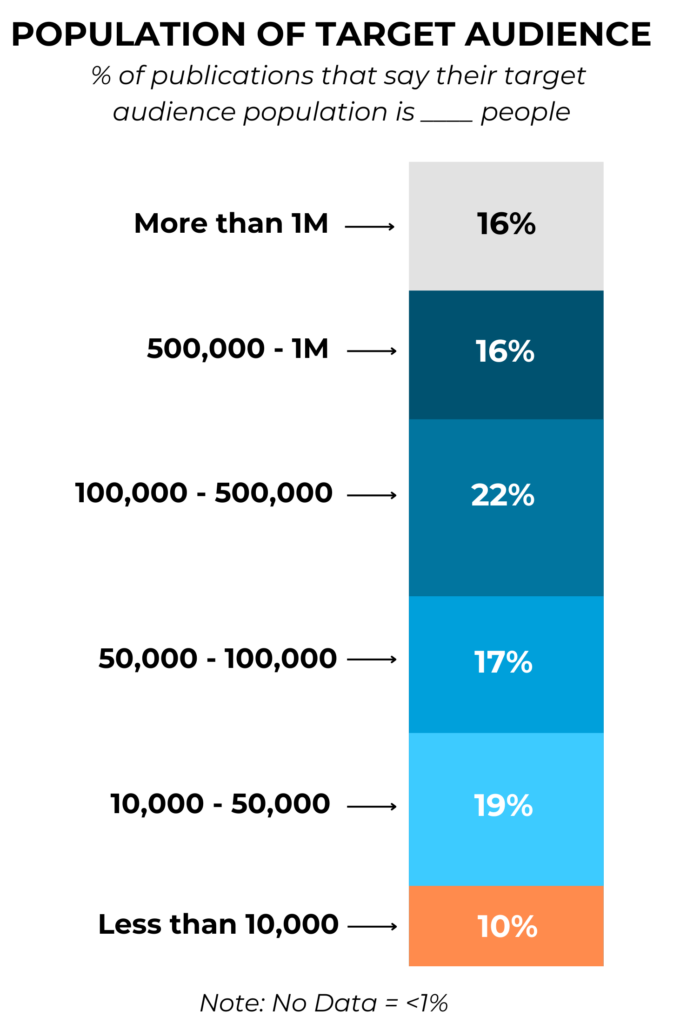
By Michele McLellan and Ha Ta
Aug. 8, 2023
Definition: Local news organizations are those that cover part or all of a community, municipality or county or a cluster of them, ranging from large metro areas to small neighborhoods. The factsheet covers data for 145 local news organizations.
Local nonprofit news is in the midst of a sustained multiyear expansion into more communities, and the number of organizations has more than doubled in six years. They have launched at an average rate of more than one per month, a total of 81 outlets, since rapid growth began in 2017. Twelve local outlets in this study launched in 2022.
Growth
Local news outlets made up about one-fourth of the nonprofit field in 2017, when the number of outlets began to expand rapidly. Now, nearly five in 10 nonprofit news organizations (46%) are local in scope. Local startups, which we define as launching in the past three years, account for nearly two-thirds (63%) of the 79 nonprofits that started up in that timeframe.

Mission and impact
Seven in 10 local publishers say their coverage casts a wide net, reporting on a range of local topics. This contrasts with non-local nonprofit publications that are more likely to focus on a narrower band of related topics or to specialize in a single topic. As the local segment of the field expands into smaller communities, the percentage of them that focuses on current, general news is growing while the share that is primarily investigative is shrinking.
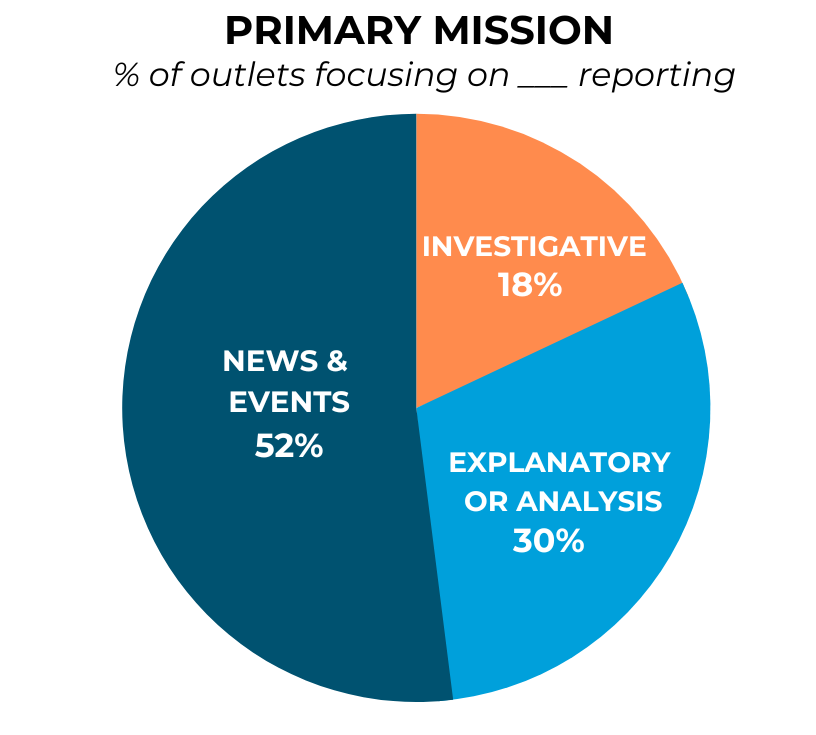
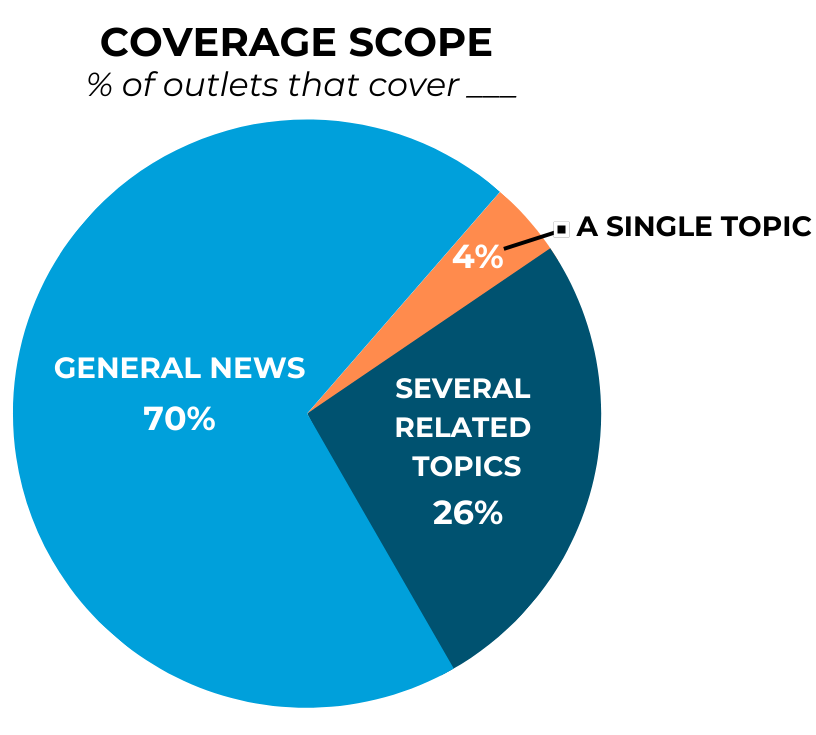
Local outlets report far fewer journalistic collaborations with other news outlets than the rest of the field, possibly because there are fewer partners available within their local markets. Nearly four in 10 (37%) did not participate in at least one collaboration in 2022, compared to only 14% of the all non-local outlets.
More than the rest of the field, local news organizations are likely to say encouraging and inspiring civic engagement is a top priority. According to our 2022 survey, nearly three-fourths (72%) said it’s a high priority. (Non-local outlets are more likely to emphasize exposing wrongdoing or shedding light on complex topics.)
The top three topics covered by local outlets are government, arts & culture and K-12 education.
More than one third of local outlets say serving low income communities is one of their top priorities, much higher than any other group cited by local outlets. Local organizations are slightly more likely than their counterparts to cite this priority.
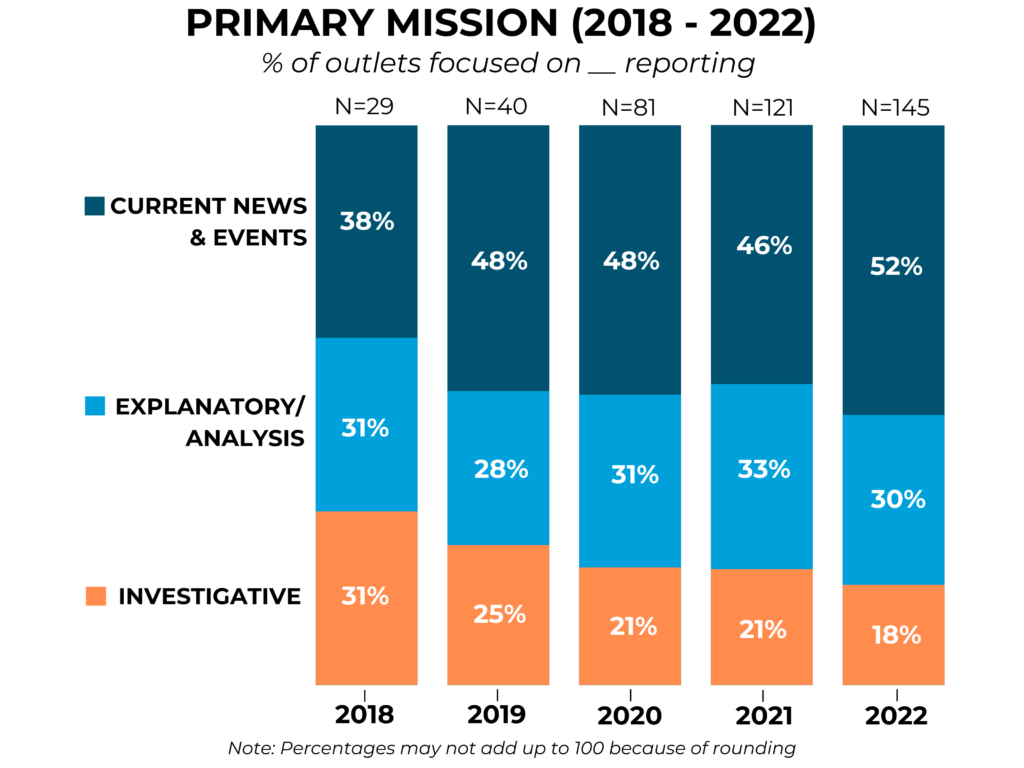
Change over time in the makeup of INN member outlets’ primary mission
One in four local outlets say serving communities of color is the primary focus of their work, higher than the rest of the non-profit field where the average is one in five outlets. Local startups are driving much of this focus. Out of 18 startups with a primary focus on serving communities of color, 13 are local in scope. Overall, local organizations are more likely than other types of news outlets to serve Asian, Black and Hispanic audiences as well as low-income and immigrant communities.
Local organizations generally operate on small budgets. Nearly half generate less than $250,000 a year in revenue and more than half of those earn less than $100,000 a year. Median revenue was $271,000 per outlet compared to $245,000 in 2021.
Revenue mix
As a group, local outlets derive 45% of their total revenue from foundation grants. Community and local foundations are driving some of this revenue growth. Among 132 local outlets that provided revenue data for 2022, nearly two-thirds reported receiving grants from community or local foundations, and six in 10 of those recipients said that source represented 50% or more of their total foundation revenue. The median contribution from a community or local foundation to a local outlet was an estimated $50,000.
Local outlets still see fewer foundation funding dollars when compared to those that operate on a national or global scale. However, the group reported modest improvements in how the sector’s foundation funding is distributed. Local outlets employ 23% of the sector’s paid personnel, but receive only 17% of foundation funding dollars, compared to 11% the year before.
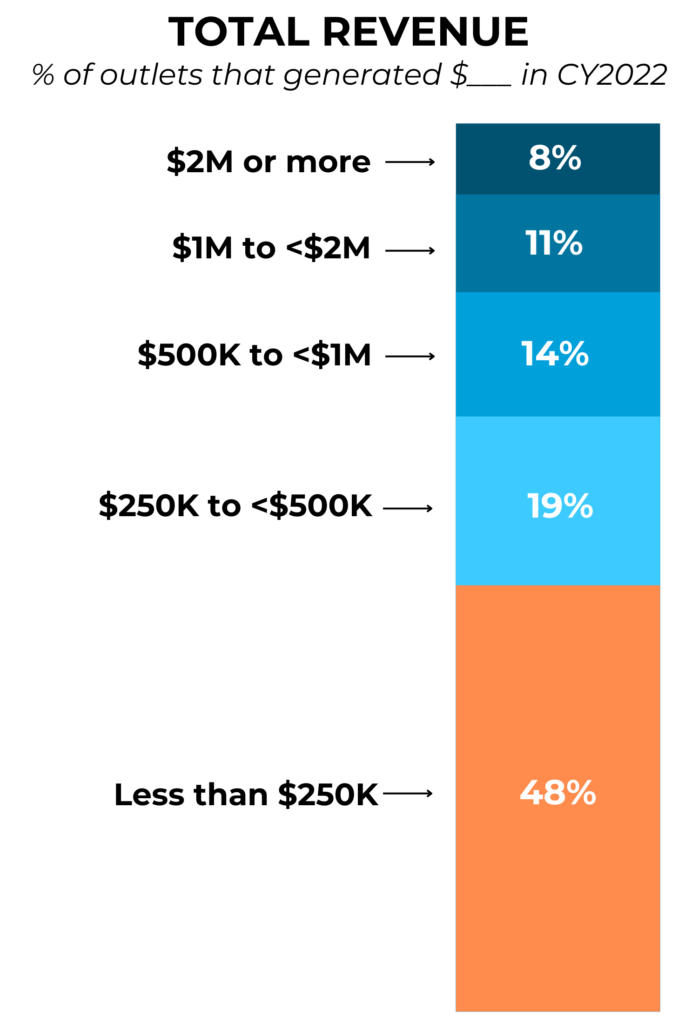
Earned revenue
Local organizations have historically led the field in earned revenue such as advertising and sponsorships. And 2022 was no exception, with local outlets reporting that more than one quarter of their revenue dollars came from earned sources, more than 10 percentage points higher than their non-local counterparts.
Local outlets are also regaining some of the advertising and other earned revenue dollars lost during the COVID-19 pandemic. Local outlets grew earned revenue significantly between 2021 and 2022. Larger, more established local outlets are experiencing the most success regaining earned revenue, with advertising dollars (as opposed to sponsorship and underwriting) largely driving the growth.
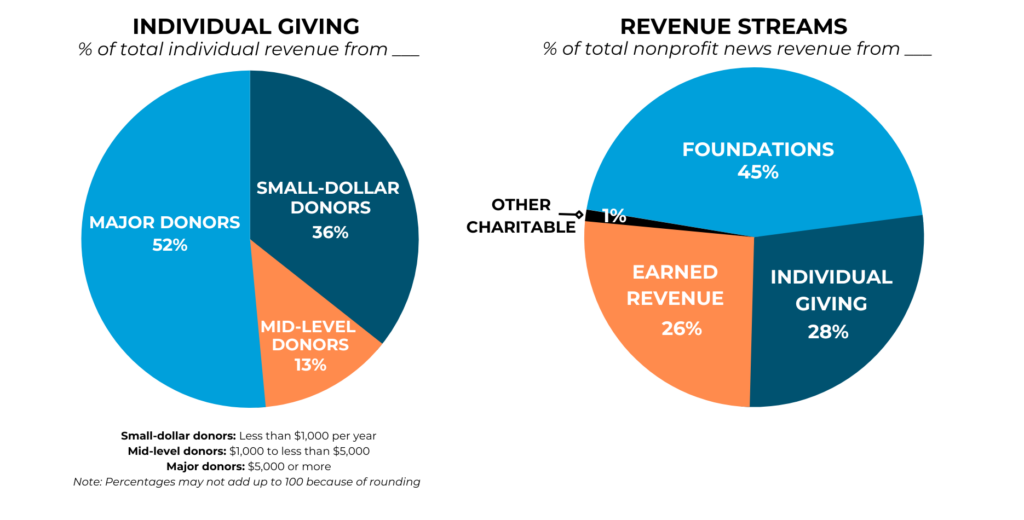
Revenue outlook
As the wave of local startups matures, revenue growth is likely. Still, local outlets face challenges on all three major revenue fronts: Foundation grants, donor support and earned revenue. They must establish or grow a donor base within their communities, which are often small. Mature organizations must continue to restore earned revenue lost in the pandemic while newer organizations must figure out whether they can make this type of revenue a steady source. While the entry into the field of local and community foundation funders is encouraging, local foundation resources may not be available in every community.
The median number of personnel among the local organizations is 4 and paid employees per organization range in number from 0 to 35. Two-thirds of FTE are devoted to editorial activities while the rest focus on activities such as revenue generation and technology.
About one third of all personnel are people of color and nearly 3 in 10 of the top executives are as well. About one third of local outlets have 40% or more people of color on staff, but nearly the same number of outlets have no employees of color.

Local outlets rely heavily on their own channels to reach their readers. The most common direct platforms were digital, emails and social media.
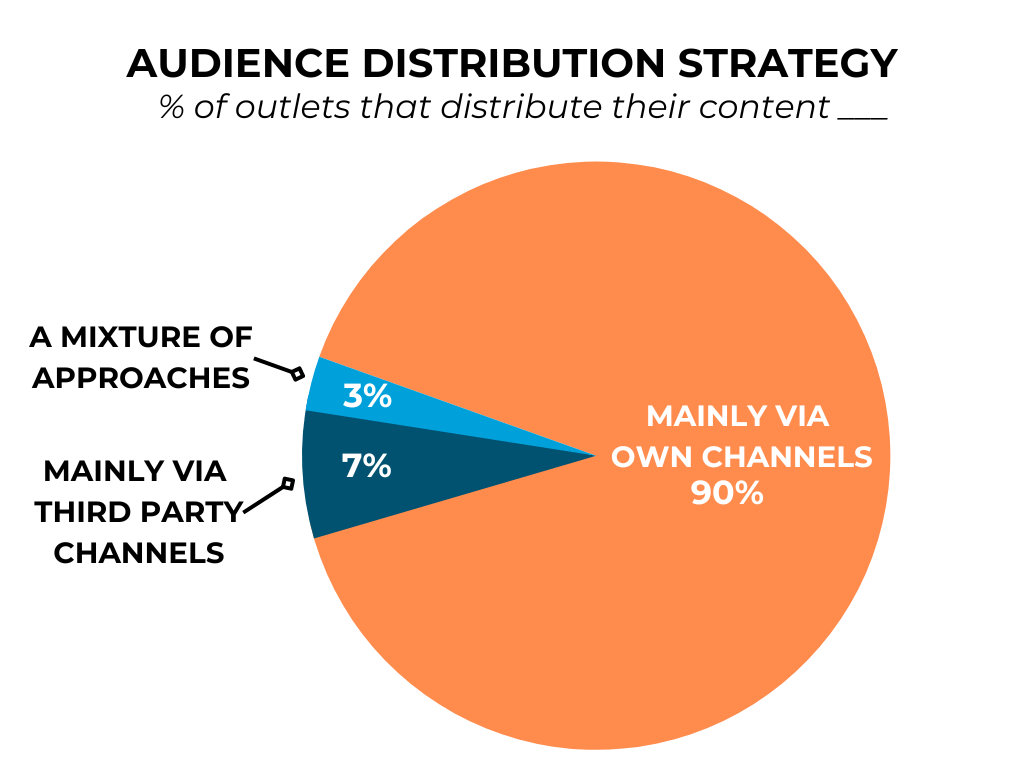
Correspondingly, they have significantly fewer third-party publication partners than their non-local counterparts. The median number is 2 partners, more than five times fewer than the rest of the field. Their work was published regularly in 2022 by an estimated total of nearly 800 publications. The most common third-party vehicles were digital outlets and print newspapers.
